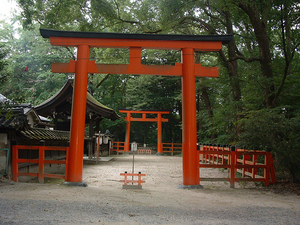World Heritage Site
From SamuraiWiki
(Redirected from World Heritage Sites)
Jump to navigationJump to search- Japanese: 世界遺産 (sekai isan)
World Heritage Sites are designated by UNESCO (United Nations Educational, Scientific, and Cultural Organization) as the sites of the greatest historical and cultural importance to all humanity, and the most worth protecting. UNESCO also maintains a similar list of performing arts and other practices, designating these Intangible Cultural Heritage.
There are currently 19 World Heritage Sites in Japan, several of which are umbrella categories including numerous individual sites. A number of other sites have been proposed and are in various stages of the process of being considered for inclusion.
Cultural Sites
- Buddhist Monuments in the Horyu-ji Area
- Gusuku Sites and Related Properties of the Kingdom of Ryukyu
- Himeji castle
- Hiraizumi – Temples, Gardens and Archaeological Sites Representing the Buddhist Pure Land
- Hiroshima Peace Memorial (Genbaku Dome)
- Historic Monuments of Ancient Kyoto (Kyoto, Uji and Otsu Cities)
- Historic Monuments of Ancient Nara
- Historic Villages of Shirakawa-gô and Gokayama
- Itsukushima Shrine
- Iwami Ginzan Silver Mine and its Cultural Landscape
- Mt. Fuji
- Sacred Sites and Pilgrimage Routes in the Kii Mountain Range
- Yoshino and Omine
- Kumano Sanzan
- Kôya-san
- Shrines and Temples of Nikko
- Sites of Japan’s Meiji Industrial Revolution: Iron and Steel, Shipbuilding and Coal Mining
- Gion-no-su Batteries
- Hagi castle town
- Hashima coal mine (Gunkanjima)
- Hashino iron smelting site (Kamaishi, Iwate prefecture)
- Iso Ijinkan
- Nagasaki home of Thomas Blake Glover
- Several locations within Sengan'en
- Shôkason-juku
- Shôkoshûseikan
- A number of other mines, factory sites, shipyards, and the like in Kyushu and Yamaguchi prefecture.
- Tomioka Silk Mill
Natural Sites
References
- ↑ Modern reconstructions are not eligible for World Heritage Status; Shuri castle is included on the list for the site itself, including ruins and underground archaeological material, and not for the reconstructed buildings.




